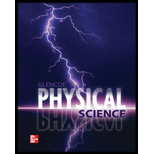
To Explain: The differences and similarities between the metal, nonmetal and metalloids.
Explanation of Solution
Introduction:
- Metals are those elements of the periodic table which have a shining surface, show the malleability property, ductility property and can form an alloy with the other metals.
- Non-metals are brittle and have a dull appearance. They are bad conductors of thermal and electric energy, but they participate in bond formation.
- Metalloids are the elements that show the metal as well as non-metal properties.
Differences between the metal, non-metal, and metalloids:
a) Metals have a shining appearance, but non-metals have a dull appearance. Metalloids are either dull or shiny.
b) Metals
c) Metals have low electronegativity, but non-metals have very high electronegativity. Metalloids have an intermediated value of electronegativity.
d) The nature of metals is malleable and ductile but nonmetal neither is malleable nor ductile.
e) Metals are found in the s, p, d, and f blocks, but non-metals are found in the p and s block. Metalloids are placed in the p-block.
f) Metals ate found on the left side of the periodic table, but non-metals lie on the periodic table’s right side. Metalloids are found in the center.
Similarities:
- All elements participate in the compound formation.
- Each element can change its state- solid, liquid or gas under suitable conditions.
Conclusion:
Hence, there are lots of differences between the metals, non-metals and metalloids but there are few similarities also present between them.
Chapter 17 Solutions
Glencoe Physical Science 2012 Student Edition (Glencoe Science) (McGraw-Hill Education)
Additional Science Textbook Solutions
Lecture- Tutorials for Introductory Astronomy
Cosmic Perspective Fundamentals
Applied Physics (11th Edition)
Conceptual Physical Science (6th Edition)
Physics (5th Edition)
Essential University Physics: Volume 1 (3rd Edition)
 College PhysicsPhysicsISBN:9781305952300Author:Raymond A. Serway, Chris VuillePublisher:Cengage Learning
College PhysicsPhysicsISBN:9781305952300Author:Raymond A. Serway, Chris VuillePublisher:Cengage Learning University Physics (14th Edition)PhysicsISBN:9780133969290Author:Hugh D. Young, Roger A. FreedmanPublisher:PEARSON
University Physics (14th Edition)PhysicsISBN:9780133969290Author:Hugh D. Young, Roger A. FreedmanPublisher:PEARSON Introduction To Quantum MechanicsPhysicsISBN:9781107189638Author:Griffiths, David J., Schroeter, Darrell F.Publisher:Cambridge University Press
Introduction To Quantum MechanicsPhysicsISBN:9781107189638Author:Griffiths, David J., Schroeter, Darrell F.Publisher:Cambridge University Press Physics for Scientists and EngineersPhysicsISBN:9781337553278Author:Raymond A. Serway, John W. JewettPublisher:Cengage Learning
Physics for Scientists and EngineersPhysicsISBN:9781337553278Author:Raymond A. Serway, John W. JewettPublisher:Cengage Learning Lecture- Tutorials for Introductory AstronomyPhysicsISBN:9780321820464Author:Edward E. Prather, Tim P. Slater, Jeff P. Adams, Gina BrissendenPublisher:Addison-Wesley
Lecture- Tutorials for Introductory AstronomyPhysicsISBN:9780321820464Author:Edward E. Prather, Tim P. Slater, Jeff P. Adams, Gina BrissendenPublisher:Addison-Wesley College Physics: A Strategic Approach (4th Editio...PhysicsISBN:9780134609034Author:Randall D. Knight (Professor Emeritus), Brian Jones, Stuart FieldPublisher:PEARSON
College Physics: A Strategic Approach (4th Editio...PhysicsISBN:9780134609034Author:Randall D. Knight (Professor Emeritus), Brian Jones, Stuart FieldPublisher:PEARSON





